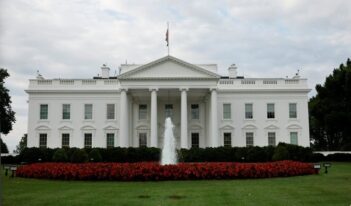
The COVID-19 response illustrates steps officials should take to ensure the effectiveness of vaccine mandates.
The COVID-19 pandemic was the worst public health emergency of the last century. Despite aggressive attempts to contain the virus by social isolation, masking, and medical management, over 1.1 million Americans died between January 31, 2020, when the U.S. Department of Health and Human Services (HHS) declared COVID-19 a public health emergency, and March 11, 2023, when HHS declared the public health emergency over. Of those that perished, there was a particularly tremendous loss among the elderly, immunocompromised, and those in nursing homes.
In December 2020, the U.S. Food and Drug Administration issued emergency use authorizations for the Pfizer-BioNTech and Moderna COVID-19 vaccines. Despite the widespread availability of the vaccines at no cost, their adoption varied considerably. For this reason, physicians and public health officials soon called for a COVID-19 vaccine mandate.
In August 2021, President Joseph R. Biden directed the Centers for Medicare and Medicaid Services (CMS) to require nursing homes to ensure their workers were fully vaccinated against COVID-19 as a condition of participating in the Medicare and Medicaid programs. The Social Security Act provides that facilities participating in Medicare must meet certain requirements and that the HHS Secretary may impose additional requirements deemed necessary to protect the health and safety of patients in hospitals, nursing homes, and other CMS-certified facilities.
HHS’s emergency declarations authorized its component agencies, such as CMS, to issue new health and safety regulations. In addition, outside of public health emergencies, CMS has the authority to oversee healthcare delivery systems. CMS issued its vaccine mandate based on substantial evidence demonstrating that the prevalence of nursing home COVID-19 cases was related to low levels of vaccination among care staff. Furthermore, evidence that many nursing homes were not implementing standard infection control practices accelerated vaccine mandate drafting and execution.
The Administrative Procedure Act requires that agencies that wish to forgo notice-and-comment rulemaking during a public health emergency must demonstrate that undergoing notice-and-comment would be “impracticable, unnecessary, or contrary to the public interest.” The Biden Administration concluded on this basis that it could create an emergency regulation to require vaccines in nursing homes. Nevertheless, as CMS was developing its emergency regulation, nursing homes expressed concern that the mandate could trigger widespread staff shortages because workers would refuse to receive the vaccine. The industry feared that a staffing shortage could lead to worse health outcomes for residents.
While developing the vaccine mandate, the CMS Center for Clinical Standards and Quality convened several listening sessions from all corners of the healthcare industry. During this feedback period, several states issued their own vaccine mandates in both nursing homes and hospitals, and individual nursing home chains and hospital systems also proposed vaccine mandates. This patchwork approach further complicated efforts to limit the spread of COVID-19.
Hospitals and nursing homes were concerned that the variation between states’ rules could lead staff to move to different states to avoid a vaccine mandate. Several providers pushed for a national mandate. A marked increase in the proportion of nurses who sought employment through traveling services during the public health emergency validated this concern. Several national leaders suggested that a national mandate would be useful to manage interstate variability.
Because of these concerns, CMS and HHS began to explore the medical benefits of a national mandate for all healthcare facilities that receive Medicare funding. Data from the National Healthcare Safety Network demonstrated that COVID-19 rates among long-term care facilities were higher in facilities with lower vaccination coverage among staff. The agencies also explored the legal basis for a mandate. Critically, they determined that systems for documenting medical and religious exemptions to the vaccine mandate would be needed.
Ultimately, CMS issued its regulation in November 2021. Shortly thereafter, 14 states challenged the regulation and argued that CMS had exceeded its statutory authority under the Social Security Act. In January 2022, the U.S. Supreme Court, in a 5–4 decision, upheld the mandate, explaining that:
The Secretary of Health and Human Services determined that a COVID-19 vaccine mandate will substantially reduce the likelihood that healthcare workers will contract the virus and transmit it to their patients. He accordingly concluded that a vaccine mandate is “necessary to promote and protect patient health and safety” in the face of the ongoing pandemic. The rule thus fits neatly within the language of the statute.
Importantly, the Court found that the HHS Secretary had examined sufficient evidence justifying the decision to “(1) impose the vaccine mandate instead of a testing mandate; (2) require vaccination of employees with ‘natural immunity’ from prior COVID-19 illness; and (3) depart from the agency’s prior approach of merely encouraging vaccination.”
After the Biden Administration declared the public health emergency over in March 2023, CMS ended its vaccine mandate in August. In the end, the mandate did not substantially disrupt the healthcare ecosystem, and staff resignations due to the mandate did not produce national adverse health outcomes.
It is difficult to analyze the precise effects of the vaccine mandate because there were many states and local facilities that had already mandated the vaccine. Nonetheless, there are at least three important lessons public health officials can learn for the future from CMS’s experience in imposing a COVID-19 vaccine mandate.
First, it will be important to address the non-uniform manner in which states and local healthcare facilities adopt a mandatory vaccination policy during any future pandemic. There should be a national vaccine for healthcare facilities as soon as a safe and effective vaccine is approved. Early adoption can ensure national uniformity, which can in turn help prevent localized staffing shortages. The federal government should also monitor and evaluate the impact of any such mandate and adjust the manner of implementation as needed.
Second, public health officials should proactively collect evidence to demonstrate the health and safety implications of unvaccinated staff in Medicare-certified facilities to justify the need to forgo notice and comment rulemaking. This evidence can also help justify a national vaccine mandate if challenged in the courts.
Finally, public health officials should develop and implement rigorous standards for determining who is exempt from the vaccine mandate by balancing civil rights with healthcare concerns. Rigorous standards will help ensure vaccines succeed in cutting community transmission.
The political debate around vaccination continues to this day but these three lessons can help public health officials prepare for future public health emergencies.





